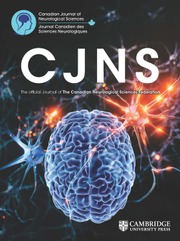No CrossRef data available.
Article contents
Multidisciplinary Rehabilitation Intervention Activities for People with Migraine: Scoping Review
Published online by Cambridge University Press: 23 January 2025
Abstract
Migraine management involves a wide range of clinical rehabilitation practices. This variability hampers the clinical applicability of these protocols. Before proposing any recommendations for migraine interventions, one needs to identify how interventions are generally structured. This study aimed to systematically map the activities in multidisciplinary rehabilitation programs for people with migraine.
We conducted a scoping review from January 2002 to April 2024 in MEDLINE®, CINAHL, Academic Search Complete, AMED, APA PsycInfo and Academic Search Complete databases. Search terms were related to (i) migraine or headache, (ii) intervention and (iii) multidisciplinary or interdisciplinary care. Language and population inclusion criteria were applied. Two researchers independently screened titles, abstracts and full-text articles and extracted data according to three topics: (i) activities and their modalities, (ii) professionals involved and (iii) tools used.
The activities identified ranged from medication management and a variety of exercise types and lifestyle changes using education strategies to stress management techniques. Psychological interventions were rarely defined and appeared to overlap with education and stress management techniques. Information on treatment delivery was scarce. Professionals from many disciplines were mentioned. The outcomes assessed included migraine or headache characteristics, psychological symptoms, disability and quality of life. No explicit theoretical models were found.
The results highlight the heterogeneity of activities in multidisciplinary interventions for people with migraine. Operationalizing an intervention based on a theoretical model is essential for allowing replications, evaluation and implementation in rehabilitation settings.
Résumé
examen de la portée des connaissances.
La prise en charge de la migraine comprend un large éventail de pratiques de réadaptation clinique, ce qui nuit à l’applicabilité des protocoles. Aussi faut-il comprendre la structure générale des interventions avant de pouvoir formuler des recommandations sur le traitement de la migraine. La présente étude visait donc à recenser de manière systématique les activités offertes dans différents programmes de réadaptation multidisciplinaires s’adressant aux personnes atteintes de migraine.
Un examen de la portée des connaissances, couvrant la période de janvier 2002 à avril 2024, a été entrepris dans les bases de données MEDLINE®, CINAHL, Academic Search Complete, AMED, APA PsycInfo et Academic Search Complete. Les termes recherchés étaient en lien avec 1) la migraine ou les céphalées; ii) les interventions; iii) et les soins multidisciplinaires ou interdisciplinaires. Ont été appliqués des critères de sélection relatifs à la langue et aux populations. Deux examinateurs ont indépendamment trié et évalué les titres, résumés et articles complets, avant d’en extraire les données sur trois sujets : i) les activités et leurs modalités de réalisation; ii) les professionnels impliqués; iii) et les outils utilisés.
Les activités recensées variaient de la gestion de la médication à des techniques de gestion du stress, en passant par divers types d’exercices et de changements des habitudes de vie à l’aide de stratégies éducatives. Les interventions de nature psychologique étaient rarement définies et semblaient coïncider en partie avec des techniques d’éducation et de gestion du stress. Il y avait très peu d’information sur la prestation des traitements. Les professionnels de la santé mentionnés provenaient de différentes disciplines. Les résultats évalués comprenaient les caractéristiques des migraines ou des céphalées, les symptômes psychologiques, l’incapacité et la qualité de vie. Aucun modèle théorique n’a été cité explicitement.
Les résultats font ressortir l’hétérogénéité des interventions multidisciplinaires chez les personnes souffrant de migraine. Il est essentiel que l’opérationnalisation des interventions repose sur des modèles théoriques afin d’en rendre possibles la reproductibilité, l’évaluation et la mise en oeuvre en contexte de réadaptation.
Keywords
- Type
- Original Article
- Information
- Copyright
- © The Author(s), 2025. Published by Cambridge University Press on behalf of Canadian Neurological Sciences Federation


